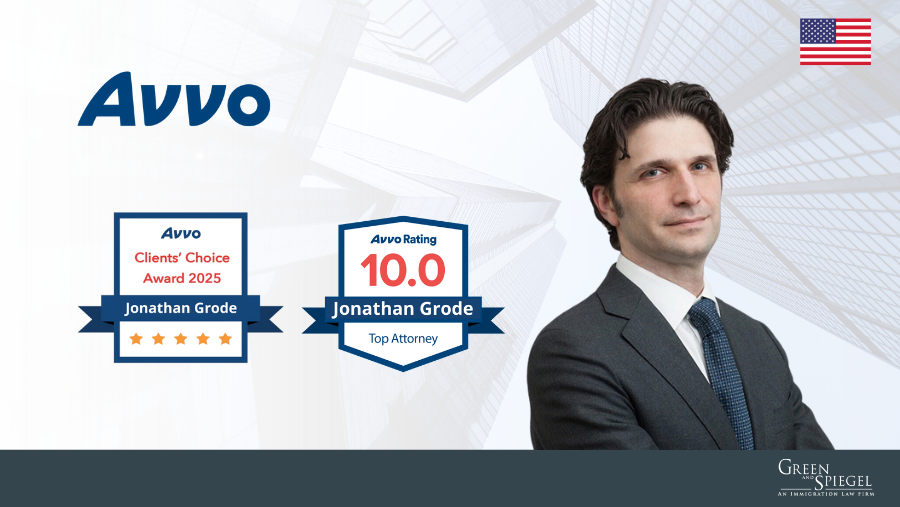On December 17, 2024, the Department of Homeland Security (DHS) announced a final rule aimed at modernizing and improving the efficiency of the H-1B visa program. The H-1B nonimmigrant visa program enables U.S. employers to temporarily hire foreign workers for specialty occupations, which are statutorily defined as roles requiring highly specialized knowledge and at least a bachelor’s degree in a specific field or its equivalent. The H-1B program, established by Congress in 1990, has undergone some updates over the years but remained in critical need of further modernization.
Outlined below are the major changes from this rule and the implications for employers, foreign workers, and students:
H-1B Employment Must be Bona Fide
DHS is codifying that “[a]t the time of filing, the petitioner must establish that it has a bona fide position in a specialty occupation available for the beneficiary as of the start date of the validity period as requested on the petition.”
Refining the meaning of “Specialty Occupation”
DHS refines the definition of “specialty occupation.” DHS clarifies that the qualifying degree fields must be “directly related,” meaning that there is a logical connection between the degree, or its equivalent, and the job duties, though the position can accept a range of degree types.
Material Changes in Work Location
DHS clarifies that any change of work location that requires a new LCA is itself considered a material change. The petitioning employer would have to file an amended or new petition with USCIS before the H-1B worker may perform work under the changed conditions.
Codifying Deference to Prior Approvals
DHS codifies and clarifies the deference policy that USCIS provides to prior USCIS determinations. The deference policy instructs officers to consider prior determinations involving the same parties and facts, when there is no material error with the prior determination, no material change in circumstances or in eligibility, and no new material information adversely impacting the petitioner’s, applicant’s, or beneficiary’s eligibility.
Evidence of Maintenance of Status
DHS also clarifies that evidence of maintenance of status is required for petitions where there is a request to extend or amend the beneficiary’s stay. This policy impacts all employment-based nonimmigrant classifications that use Form I-129, Petition for Nonimmigrant Worker.
Late-Adjudication Validity Updates
DHS will allow H-1B petitions to be approved or have their requested validity period dates extended if USCIS adjudicates and deems the petition approvable after the initially requested validity period end-date, or the period for which eligibility has been established, has passed. If USCIS adjudicates an H-1B petition and deems it approvable after the initially requested validity period end-date, or the last day for which eligibility has been established, USCIS may issue an RFE asking whether the petitioner wants to update the dates of intended employment.
Nonprofit and Governmental Research Organizations
DHS is changing the definition of “nonprofit research organization” and “governmental research organization” by replacing the terms “primarily engaged” and “primary mission” with “fundamental activity” to permit nonprofit entities or governmental research organizations that conduct research as a fundamental activity, but are not primarily engaged in research or where research is not a primary mission, to meet the definition of a nonprofit research entity or governmental research organization for purposes of establishing exemption from the annual statutory limit on H-1B visas. Additionally, DHS is revising the regulations to recognize that certain beneficiaries may qualify for H-1B cap exemption when they are not directly employed by a qualifying organization, but still spend at least half of their time providing essential work that supports or advances a fundamental purpose, mission, objective, or function of the qualifying organization.
Extending Cap-Gap
DHS is extending the automatic cap-gap extension. Currently, the automatic extension is valid only until October 1 of the fiscal year for which H-1B status is being requested, but DHS extends this until April 1 of the fiscal year.
US Employer Definition
DHS will eliminate the employer-employee relationship requirement. In place of the employer employee relationship requirement, DHS will codify the requirement that the petitioner has a bona fide job offer for the beneficiary to work, which may include telework, remote work, or other off-site work within the United States. DHS also will replace the requirement that the petitioner “[e]ngages a person to work within the United States” with the requirement that the petitioner have a legal presence and is amenable to service of process in the United States.
Site Visits
DHS is adding regulations specific to the H-1B program to codify its existing authority and clarify the scope of inspections and the consequences of a petitioner’s or third party’s refusal or failure to fully cooperate with these inspections. Using its general authority, USCIS may conduct audits, on-site inspections, reviews, or investigations to ensure that a petitioner and beneficiary are entitled to the benefits sought and that all laws have been complied with before and after approval of such benefits. DHS also clarifies that refusal to comply with site visits may result in denial or revocation of the petition.
Third-Party Placement
If the beneficiary will be staffed to a third party, meaning they will be contracted to fill a position in a third party’s organization and becomes part of that third party’s organizational hierarchy by filling a position in that hierarchy (and not merely providing services to the third party), the actual work to be performed by the beneficiary must be in a specialty occupation. Therefore, it is the requirements of that third party, and not the petitioner, that are most relevant when determining whether the position is a specialty occupation.
Other Changes
- DHS eliminated the H programs’ itinerary requirement.
- DHS will codify USCIS’ authority to request contracts, work orders, or similar evidence.
- DHS will codify its requirement that the petitioner must establish, at the time of filing, that it has a bona fide position in a specialty occupation available for the beneficiary as of the start date of the validity period as requested on the petition.
- DHS will update the regulations to expressly include DHS’s existing authority to ensure that the LCA supports and properly corresponds with the accompanying H-1B petition.
- DHS codifies a petitioner’s ability to qualify as a U.S. employer even when the
beneficiary possesses a controlling interest in that petitioner. USCIS will limit the validity of the initial H-1B petition and first extension in these cases to 18 months each.
Given that Congress has failed to address the H-1B program in a meaningful way for decades, these regulatory changes are certainly a step in the right direction. DHS has attempted to provide flexibility to petitioners and beneficiaries while simultaneously enhancing the program’s safeguards. It appears that they have threaded that needle fairly well. This rule makes it easier to keep working while trying to change from F-1 status to H-1B, expands the definition of what qualifies as a nonprofit or governmental research organization to allow more companies to be exempt from the H-1B statutory limit on visas, and allows for certain owners of petitioning entities to be eligible for H-1B status. At the same time, this rule codifies the ability of USCIS and DHS to request certain types of evidence, use site visits as an enforcement tool, and put reasonable parameters around H-1B eligibility when the beneficiary owns a controlling interest in the petitioning entity.
It should be noted, much of this rule is merely codifying already existing policy, like the deference to prior determinations. In the forthcoming Trump Administration, however, having codified regulations rather than internal policy memoranda will be important to prevent immediate changes to the immigration landscape. As an example, the deference to prior determinations was previously implemented in a 2004 memorandum, rescinded in 2017, and reinstated in 2021 in the USCIS Policy Manual. Codifying it in the Federal Register does not mean it will not be rescinded again; but rather will most likely require going through the rule making process again, which is not instantaneous and thus not a shock to H-1B employers and beneficiaries.
While these changes are a step in the right direction, they don’t address the most important issues facing the immigration system. The H-1B program is valuable when accessible, but it’s not accessible to most who need it. You not only need to qualify by having specialized knowledge and at least a bachelor’s degree, but you generally also have to have luck on your side in order to be selected in the H-1B lottery. For FY 2024, the odds of being selected were about 24%, and for FY 2025, only slightly better at 29%. While FY 2024 was impacted by potentially fraudulent entries into the lottery, FY 2025 saw the highest number of eligible registrations for beneficiaries with no other eligible registrations, indicating increasing interest in the H-1B program. DHS tried to address this with a roundabout fix, changing the definition of what qualifies as a nonprofit or governmental research organization. However, it feels more like a band-aid on a deeper wound. Congress needs to do what DHS set out to do with this H-1B rule and work on modernizing and improving the efficiency of our immigration system at large.
The DHS final rule represents a balance between safeguarding U.S. workers’ interests and supporting the economy’s need for skilled global talent. For businesses reliant on the H-1B program, this is a critical moment to reassess compliance strategies and leverage the new flexibility to attract and retain top talent.
If you have questions about how these changes might impact your immigration strategy, feel free to reach out to discuss tailored solutions.





